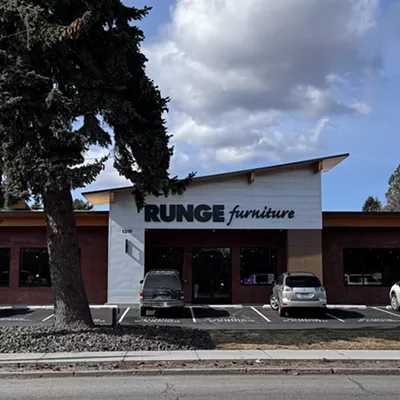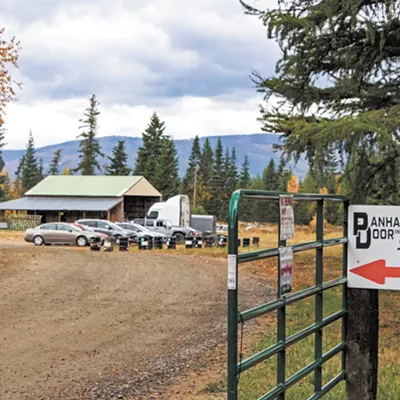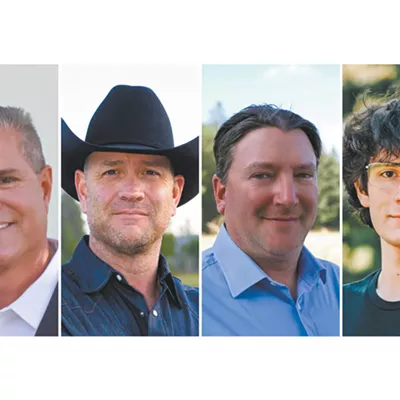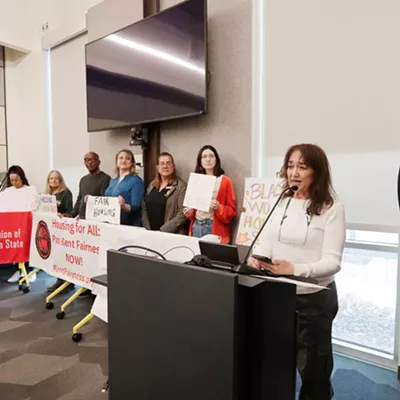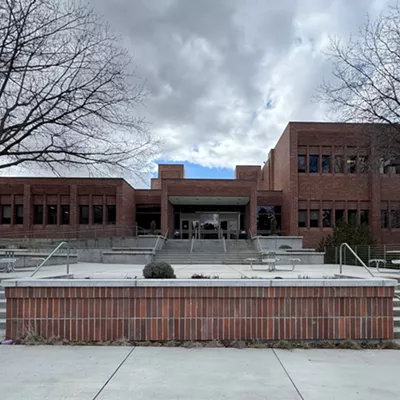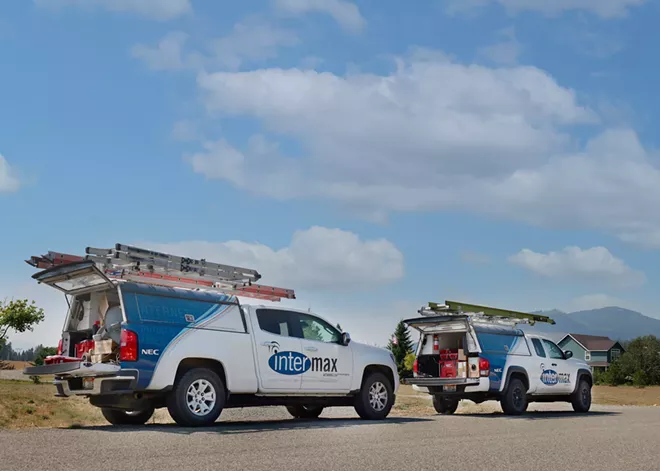
When the COVID-19 pandemic caused lockdowns in 2020, many in Idaho and Eastern Washington began working remotely, schooling from home and increasing their use of telehealth appointments. While the demand for high-speed internet continues to increase, many rural areas lack reliable or affordable internet service.
Grants for broadband internet expansion through programs such as the Federal Communications Commission's (FCC) Connect America Fund, CARES Act funding, and Idaho's state capital projects fund have enabled internet providers to expand coverage for some underserved communities, and more federal funding could be on the way.
The Digital Access for All Idahoans Plan, prepared by the Idaho Commission for Libraries and released this year, states that 17.9% of rural respondents to a digital access survey reported they need home internet. The statewide survey of 1,000 Idaho adults was conducted in May 2023. Limited broadband access and the cost of service are critical factors for many rural residents who go without internet access.
Among low-income households in Idaho, 33.9% report accessing the internet with their computers in public locations. A household is considered low-income if it earns at or below 150% of the federal poverty level. According to the Digital Equity Act of 2021, 20.7% of households in Idaho qualify as low-income.
The U.S. Census estimates the state has 100,000 underserved households in need of high-speed broadband internet. Underserved is defined as a household that lacks access to 100 Mbps internet.
In addition, the Census estimates that, on average, about 6% of Idaho K-12 students were homeschooled during 2022 and 2023.
Some companies are already working to meet the need. Internet service provider Intermax has expanded coverage in rural North Idaho with grants from the Idaho Broadband Advisory Board, Idaho's Office of Broadband, and federal funding.
"We expanded into fiber optic a number of years ago, but when the pandemic hit, and the federal government put money toward expanding rural broadband, we participated in several rounds of that funding to be able to continue doing what we're doing," says Mike Kennedy, Intermax's president and CEO.
CONNECTING NORTH IDAHO
As a provider of fiber optic cabling for homes and businesses in rural areas, Kennedy points out that connecting more people to the service is expensive. He says a low population density and expensive infrastructure make it difficult to see a return on their investment.The recent influx of grants has helped companies like Intermax provide fiber and fixed broadband services to more rural areas. There are 67 internet service providers in Idaho, and of those, 18 providers have been awarded grants for broadband expansion through the Broadband Advisory Board.
Intermax has secured $60 million in funding for new rural connections over the past five years. Although receiving funding through grant programs from the Idaho Advisory Board is competitive, Intermax has continued to receive grants and is expected to build aggressively. Two of the company's focus areas include Kootenai County and Bonner County.
"We won three of those [grant] awards last year in 2023, and those are the areas we're building most aggressively right now, because we have to finish them by 2026," Kennedy says.
Intermax's recent expansion in Kootenai County has helped bring services to people just outside a provider's coverage area. Over the next 18 months, Intermax expects to deliver fiber optic infrastructure to 10,000 new residential addresses. The company currently serves 6,000 broadband customers, with several hundred customers connected via the latest fiber optic infrastructure, which will continue to grow.
The company's 2021 applications to build fiber optic infrastructure in Kootenai County state that some telecommunications infrastructure in the area still uses copper lines that can be as old as 45 years.
The Idaho Office of Broadband, working under the Idaho Department of Commerce and with the Idaho Broadband Advisory Board, ensures that the grants provide services where they are most needed. Intermax's work is aligned with the goals of the state agencies, Kennedy says.
"Frankly, I think we've won more [grants] than most companies because we pay close attention to the rules, we know what we're doing, and we work hard to make sure that we're getting the most unserved people involved."
IDAHO BROADBAND OFFICE
Acknowledging the need for state guidance over broadband expansion, Idaho lawmakers passed House Bill 127 in 2021 to create the Idaho Broadband Advisory Board. The nine-member board consists of three members from the Idaho House of Representatives, three from the Idaho Senate and three appointed by the governor.The board is responsible for the Idaho Broadband Strategic Plan and prioritizing how grant funds are dispersed. Working closely with the Idaho Office of Broadband, the advisory board focuses on helping communities receive broadband internet access in support of improving distance learning, remote work and telehealth.
Ramón Hobdey-Sánchez is the director of the Idaho Office of Broadband. He says his office partners with the advisory board to achieve their mutual goals.
Topography, including mountains, rivers and hills, has hampered broadband internet installation around Idaho.
Despite these challenges, Hobdey-Sánchez says the broadband advisory board has awarded 18 projects to 15 companies that have connected 35,000 homes and businesses to date.
For Hobdey-Sánchez, reliable broadband internet access is important because of the economic development it creates. Helping small and independent businesses is one aspect, but attracting large-scale businesses helps the state as a whole reap the benefits.
Creating economic opportunities and access to the internet helps retain a workforce that is needed in Idaho, Hobdey-Sánchez says.
"There's also direct impacts as it relates to telework and telehealth opportunities," he says. "And one thing you'll often hear Gov. [Brad] Little talk about is the importance of educating our children and creating environments where our children and the generations after us want to stay here in Idaho."
INTERNET AS A UTILITY
Ashley Jones, a Rathdrum resident who works remotely, says she needs reliable and affordable broadband internet. She initially lived in Post Falls and had Spectrum internet, but when she moved to Rathdrum in July, she quickly learned that Spectrum didn't provide broadband service to her area."I had to call probably two or three different internet providers, and they didn't have service in our area, and so I had to ask around to our local neighbors to figure out who they used, and they all use Intermax," Jones says.
When she called, Intermax's fiber optic project in the area wasn't completed yet, and the company gave her an estimated completion date of six weeks. So, in the meantime, Jones said she used Starlink, a satellite internet provider and a subsidiary of SpaceX.
Jones says that the Starlink kit she purchased was expensive and that the internet service cost twice as much as Intermax. Then, there was the fact that she lived up a hill with plenty of trees, which made wireless internet difficult.
When the Intermax fiber optic expansion was completed on time, Jones quickly returned her $600 Starlink kit and switched to Intermax.
"I expected it to take longer, and it didn't, so we had to wait a little, but it was definitely worth the wait," Jones says.
Broadband internet access is critical, Jones says, because more people use the internet for schooling, doctor appointments and streaming services now. She sees the internet as more of a utility service.
"I know so many people like my grandparents, who are in their 80s, they don't even use cable anymore," Jones says. "They do streaming, Netflix, Hulu. So it's definitely not even just these younger people."
Grant funds helped to update and expand the infrastructure that enabled Jones to have reliable fiber optic internet. She says she is thankful for the funding but understands that there are many rural and remote areas in North Idaho that still need access.
Broadband internet access will continue to receive funding in Idaho, with new programs such as the National Telecommunications and Information Administration's recent announcement of its Broadband Equity, Access, and Deployment program (BEAD). The program, under the U.S. Department of Commerce, will allot up to $583 million in grant funding for Idaho.
The program is part of the Biden-Harris administration's "Internet for All" initiative that aims to expand internet access to unserved locations that have no internet access or download speeds under 25 Mbps and underserved locations that have download speeds under 100 Mbps.
The program has multiple stages for states to submit their applications and see their allotted amount. Then, a challenge process requires time to allow internet service providers, local government agencies and nonprofit organizations to challenge whether an area is designated as unserved or underserved.
Idaho's plans for distributing and deploying funding, initiatives and workforce mobilization were approved on Sept. 5.
"So that officially puts us on the 365-day shot clock to get the program implemented, to get everything packaged and resubmitted to the feds in our final proposal," Hobdey-Sánchez says.
Idaho's U.S. Sen. Jim Risch has voted for bipartisan legislation such as the CARES Act, which helped fund broadband expansion. He says he sees the need for broadband access in Idaho but feels the red tape associated with federal funding is slowing the process too much.
"Access to reliable broadband is essential for Idaho communities to thrive and businesses to become industry leaders. Expanding broadband connectivity in rural, underserved areas across the Gem State will fuel generations of economic prosperity, job creation, and innovation," Risch says. "However, the Biden-Harris administration's bureaucratic red tape and permitting requirements are hindering the progress and timely delivery of these services to Idahoans."
Looking to the future, Hobdey-Sánchez says he believes the BEAD program will be historic and impactful.
"This type of investment, financially, is the type of investment that will have lasting impacts for generations to come, and so I think it's fair to categorize this as historic type funding, and we're just really excited and eager to get to work," Hobdey-Sánchez says. ♦




